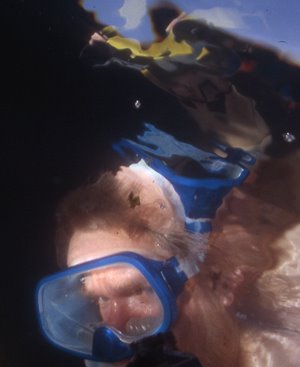Great Flaming Gas Bags!

Jess Nevins at No Fear of the Future has produced a history of the zeppelin pulps, a subgenre I never knew actually existed. (I thought it was all a joke.)
And yes, there really was a magazine called Spicy Zeppelin Stories.
The article details a rather unusual collaboration between pulp editor Frank Armer and the U.S. Navy, which wanted to buikl public support for its zeppelin program. (The problem: US Navy airships kept crashing in spectacularly fatal ways. The answer: start a pulp magazine, of course!)
The lead story in the first issue, in September, 1935, was “Death at 30,000 Feet,” starring John Paul Jones, Commander of the U.S. Navy Zeppelin Saratoga. Jones was clearly intended to be the poster child for the series and to act as a recruiting tool–his stories extol the safety and speed of zeppelins and confidently predict that they will be the future of air travel–but something unexpected happened: fan interest skewed away from Jones (who, to modern eyes, is colorless and one-dimensional) and toward Professor Zeppelin, the protagonist of the back-up story, “The Sargasso of the Skies.”
Modern readers dismiss Zeppelin as a Doc Savage rip-off–and, indeed, he is. Zeppelin is the “Sky Scientist.” Zeppelin is reputed to be “the smartest man in the world” and is an expert in every field. Zeppelin is assisted by a team of men, all experts in their fields, including Auberon “The Brigadier” Cooper, the world’s foremost export on aeronautics, and Hammond “Piggy” Higgins, America’s leading test pilot. Zeppelin has a floating base, the “Zeppelin of Silence,” stocked with technologically-advanced aircraft, including one-man “electric zeppelins.” The Zeppelin of Silence also a medical laboratory in which Zeppelin performs operations to remove the “sickness of evil” from the brains of criminals. And Zeppelin’s skin is deeply tanned from months spent in the open cockpit of his zeppelin.
The similarities to Doc Savage are pronounced. But it was these similarities which were the cause of Professor Zeppelin’s popularity. Doc Savage was at this time hitting its peak, both in quality and popularity, and the demand for more Doc Savage stories was greater than the supply, so Doc Savage imitations–like Jim Anthony and Captain Hazzard–were popular with readers.
So, too, with Professor Zeppelin. That a vigilante like Zeppelin should be more popular than a square-jawed, heroic Naval Commander like John Paul Jones was undoubtedly embarrassing to the Navy, but Armer was a wily veteran of publishing and knew to play to his strengths, so in the next few issues he relegated Jones to the back-up features and made Professor Zeppelin the pulp’s lead. Over the next nine issues–Complete Zeppelin Stories, like many other pulps, was bi-monthly–Zeppelin fought an increasingly colorful set of foes: the Prussian aviator Pontius Pilot; the Black Death, the “living disease;” Wu Fang, the Helium Mandarin; Dr. Okayuma, who vivisects spies in his zeppelin laboratory; Amenhotep, the simian Pharaoh of the Congo; and Baron Nosferatu, the Flying Vampire . . .
Street & Smith’s Zeppelin Story Magazine proved to be a minor hit, and its most popular characters, the humorous, tall-tale-telling cowboy “Gasbag” Gallagher and the Texas Ranger “Dirigible” Adams, made appearances in other Street & Smith pulps well into the 1940s. And Popular Publications, who in 1933 created the “weird menace” genre by turning the mediocre detective pulp Dime Mystery Book into the best-selling occult horror pulp Dime Mystery Magazine, made more money with another weird menace pulp: Strange Tales of the Black Zeppelin.
Strange Tales featured a variety of unusual characters and stories, two of which outlived Strange Tales itself. The serial “The Passenger in Berth 12,” written by Cornell Woolrich under the pseudonym of “K. Hite,” became the famous lost film noir The Passenger (1938), which starred Paul Muni and Ann Savage in her first lead role. And the series “Doctor Weird,” about an occult detective, was picked up by Chicago radio station WENR and turned into the horror drama “Doctor of Destinies.” Aided by its position following the notorious “Lights Out,” “Doctor of Destinies” was a hit for several years, and its opening was once as famous as The Shadow’s: a sepulchral voice intoning the phrase, “Do you dare step aboard the floating mansion of Anton Weird, Doctor of Destinies?”
Labels: zeppelin pulps


0 Comments:
Post a Comment
<< Home